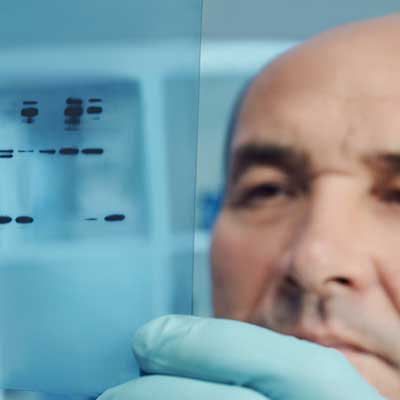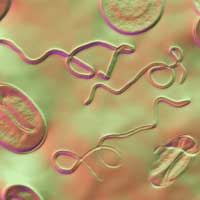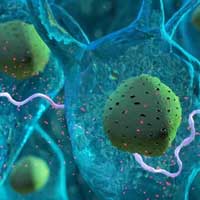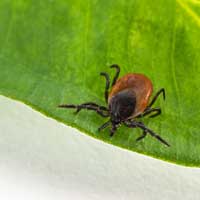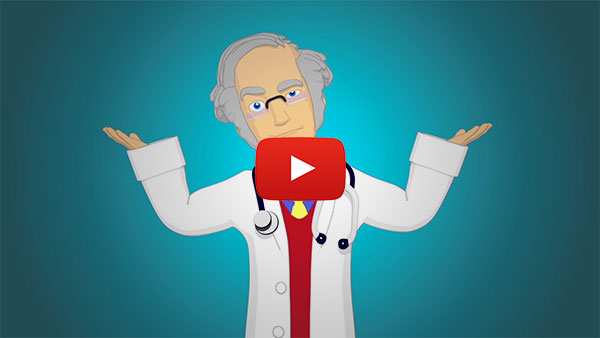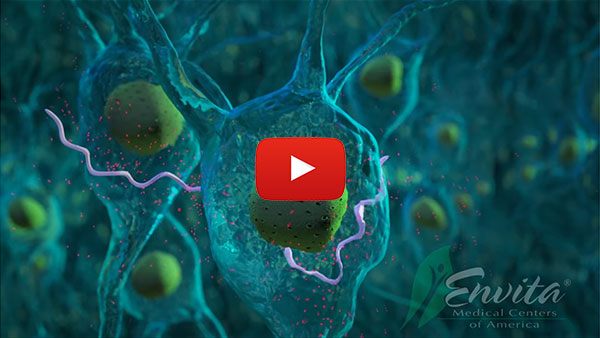Cytomegalovirus - A Chronic Lyme Disease Coinfection and Cancer-Causing Agent

Approximately 80 percent of adults in the United States are infected with cytomegalovirus (CMV), a disease that affects most people across the globe. CMV is a member of the herpes family and shares the common ability to remain alive, yet dormant, in the human body for the life of its human host. Rarely does CMV become active unless the immune system is weakened and is rendered unable to hold the virus in check. Trauma or spreading the immune system too thin with complex conditions such as Lyme disease could awaken CMV.
CMV is spread from person to person through direct contact as the virus is present in various bodily fluids, including urine, blood, saliva, semen, cervical secretions and breast milk. It can also be passed from a pregnant woman to her fetus. The best way to prevent contracting CMV is through good hygiene practices, such as regular hand-washing.
Pathogenesis of CMV
The CMV genome is composed of lineal, double-stranded DNA and surrounded by a protein lining called a "matrix," which contains phosphoproteins that are highly capable of deregulating the host's cellular cycle. This lining is surrounded by glycoproteins necessary for various aspects of the virus's infectivity, including entrance to the host cell, cell-to-cell dissemination and maturation.
The fusion between the virus with the cell is mediated by the viral glycoprotein. The fusion is followed by the entrance of the nucleocapsid and protein lining of the host cell cytoplasm. The nuclei are quickly translocated, an infection marker which may be detected in serum within an hour. The main reservoirs of CMV are the fibroblasts, myeloid cells and endothelial cells. The infection of endothelial cells and macrophages plays an important role in latency and seems to be critical for maintaining CMV in the host.
Replication typically begins within 12-24 hours after cell infection and the cytopathic effect in the viral culture can be seen after 7-14 days. As with other herpes viruses, CMV invades the host cell, inhibits protein synthesis and liberates viral DNA to the nuclei where replication can begin. A strategy CMV shares with other herpes viruses is its ability of thwarting its host's immune response by inhibiting RNA formation, thereby blocking the presentation of antigenic peptides on the cells' surface and preventing apoptosis. These mechanisms can prompt a latent infection to reactivate, oftentimes in transplant recipients.
Weakened Immune Systems are Part of this Disease
CMV is relatively harmless in most people. However, for those who already possess a weakened immune system, the virus can cause severe disease. Those who are at the greatest risk for active CMV infections and its resultant complications are as follows:
- Organ transplant recipients
- Persons with HIV infections
- Babies born to women exposed to CMV during pregnancy
- Those suffering with chronic infections such as Chronic Lyme disease or other zoonotic infections
Symptoms Related to CMV
The signs and symptoms of a CMV infection in children and adults include: prolonged high fever; chills; severe fatigue; an overall ill feeling; swollen lymph glands; headache; and an enlarged spleen. People with weakened immune systems are at risk for more serious complications including pneumonia, liver infection, anemia and in some cases, death.
In those with HIV, CMV can infect the retinas and cause blindness. In newborns, CMV infection can cause mental and developmental problems or affect vision and hearing. Most infected newborns do not show signs of the infection at birth, but these symptoms may appear over the next several years.
At Envita, we provide therapies from around the world that can help speed healing time and boost the immune systems of those with Cytomegalovirus. Our company's state-of-the-art diagnostic tools can quickly identify and correct misdiagnoses in those with CMV, affording them the opportunity to receive effective treatment for their condition and experience much-needed relief.
Ovarian Carcinoma and CMV
A study was conducted with women suffering with epithelial ovarian carcinomas who were infected with human papillomavirus (HPV), chlamydia trachomatis and cytomegalovirus (CMV). A total of 39 tissue samples were analyzed with consensus and type-specific primers for HPV, primers specific for chlamydia's cryptic plasmid, as well as primers for glycoprotein B of CMV.
Results showed 40, 80 and 50 percent positivity for HPV, Chlamydia and CMV infections, respectively, in cancerous ovarian tissues. The HPV type detected was HPV-6, with its genome integrated to the host genome in the case of both invasive and borderline tumor. Infectious genetic information was even found among the healthy controls.
The patients with Chlamydia and CMV infections were found to have significantly higher risk of developing of ovarian tumors. Findings validate the theory that chronic infections and inflammation are involved in the pathogenesis of epithelial ovarian cancer. This study is the first of its kind in detecting the bacterial and viral causatives of ovarian carcinoma development, a concept supported by Envita Medical Centers for years. In simple terms, infections and chronic inflammation can cause cancer. Envita Medical Centers aims to treat both cancer and its causative agents such as infection.
The essence of treating CMV is establishing a strong immune system and removing other infections agents responsible for the patient's immune-compromised state. For more information on the world's finest treatments for cancer and infections such as CMV, contact Envita Medical Centers today.










